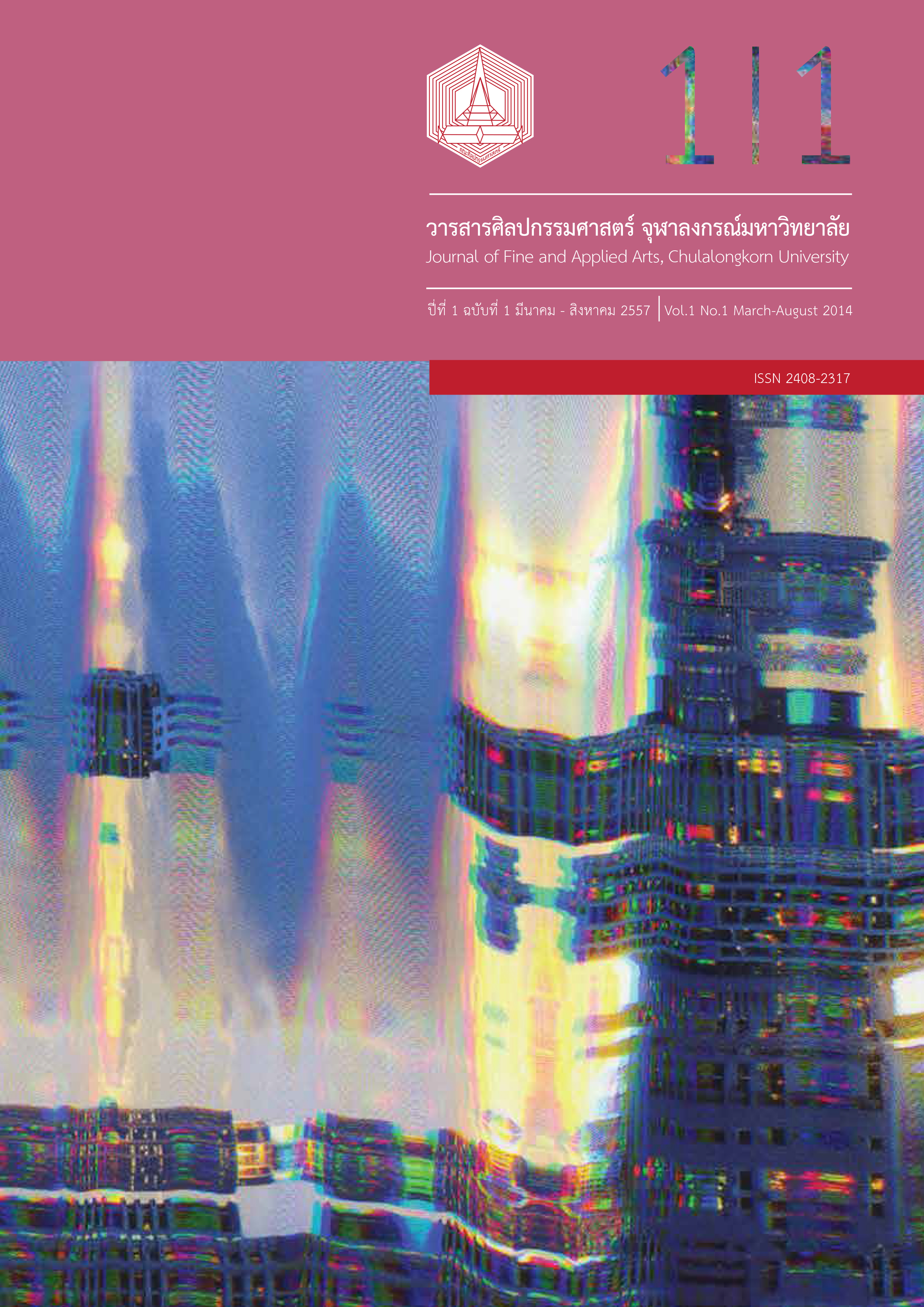การประพันธ์เพลง: “ไต้ฝุ่นนารี” ซิมโฟนี
Keywords:
การประพันธ์เพลง, ซิมโฟนี ออร์เคสตร้า, ไต้ฝุ่นนารี, Music Composition, Symphony Orchestra, Typhoon NariAbstract
บทคัดย่อ
บทประพันธ์ "ไต้ฝุ่นนารี" ซิมโฟนีนี้แต่งโดยมีเนื้อหาบรรยายถึงไต้ฝุ่นที่มีชื่อว่า "ไต้ฝุ่นนารี" ซึ่งเกิดในฤดูฝนของปีพ.ศ. 2556 ซึ่งเป็นช่วงเวลาที่ผู้เขียนต้องเดินทางออกนอกบ้านบ่อย ๆ ผู้เขียนได้บรรยายถึงความรู้สึกที่มีต่อไต้ฝุ่นนารีและช่วงเวลาดังกล่าว อีกทั้งยังมีการเปรียบเทียบคำว่า "นารี" ซึ่งเป็นชื่อของไต้ฝุ่นกับคำว่า "นารี" ในภาษาไทยที่แปลว่า "ผู้หญิง" ในเชิงพรรณนา
แนวคิดของบทประพันธ์นี้เป็นลักษณะดนตรีร่วมสมัยสำหรับวงออร์เคสตร้าใช้ระบบอิงกุญแจเสียงและเทคนิคการประพันธ์ในสมัยใหม่ มีการผสมผสานระหว่างสำเนียงดนตรีตะวันตกกับดนตรีตะวันออก
โดยแบ่งโครงสร้างออกเป็น 3 ท่อน ท่อนที่หนึ่งใช้สังคีตลักษณ์แบบโซนาตา ท่อนที่สองแบ่งออกเป็น 2 ช่วง และท่อนที่สามเป็นการนำท่อนที่หนึ่งมาดัดแปลง
Abstract
The composition of the “Typhoon Nari” Symphony particularized in this study was inherently inspired by one of the deadly typhoons called “Nari” pounding many countries during the rainy season in 2013. The composer not only described through the song his feeling reflected by the destructive power of Nari, but also comparably associated “Nari”, a typhoon’s appellation, to the meaning of its homophone in Thai which literally means “woman.”
The composition was conceptually designed as a contemporary music for an orchestra applying tonality and contemporary techniques with a combination of western and eastern musical characteristics. The structure of which was therefore separated into 3 movements—the first one is a sonata form, the second one was split into 2 sections and the last one was modified from the first movement.Downloads
Published
Issue
Section
License
ลิขสิทธิ์ของบทความเป็นของเจ้าของบทความ บทความที่ได้รับการตีพิมพ์ถือเป็นทัศนะของผู้เขียน
กองบรรณาธิการไม่จำเป็นต้องเห็นด้วยและไม่รับผิดชอบต่อบทความนั้น






